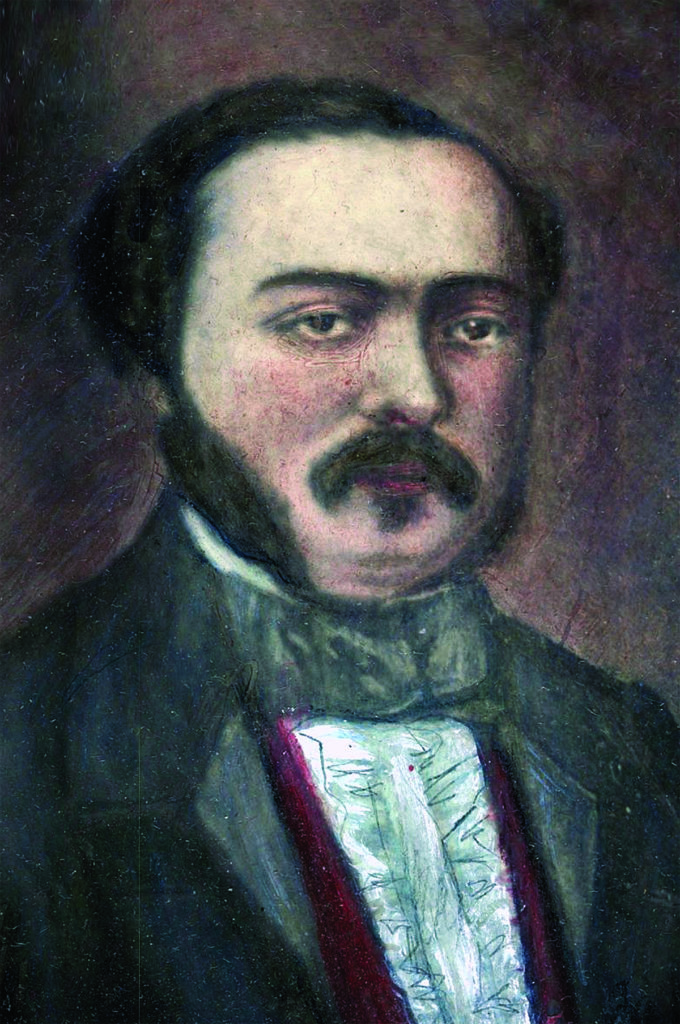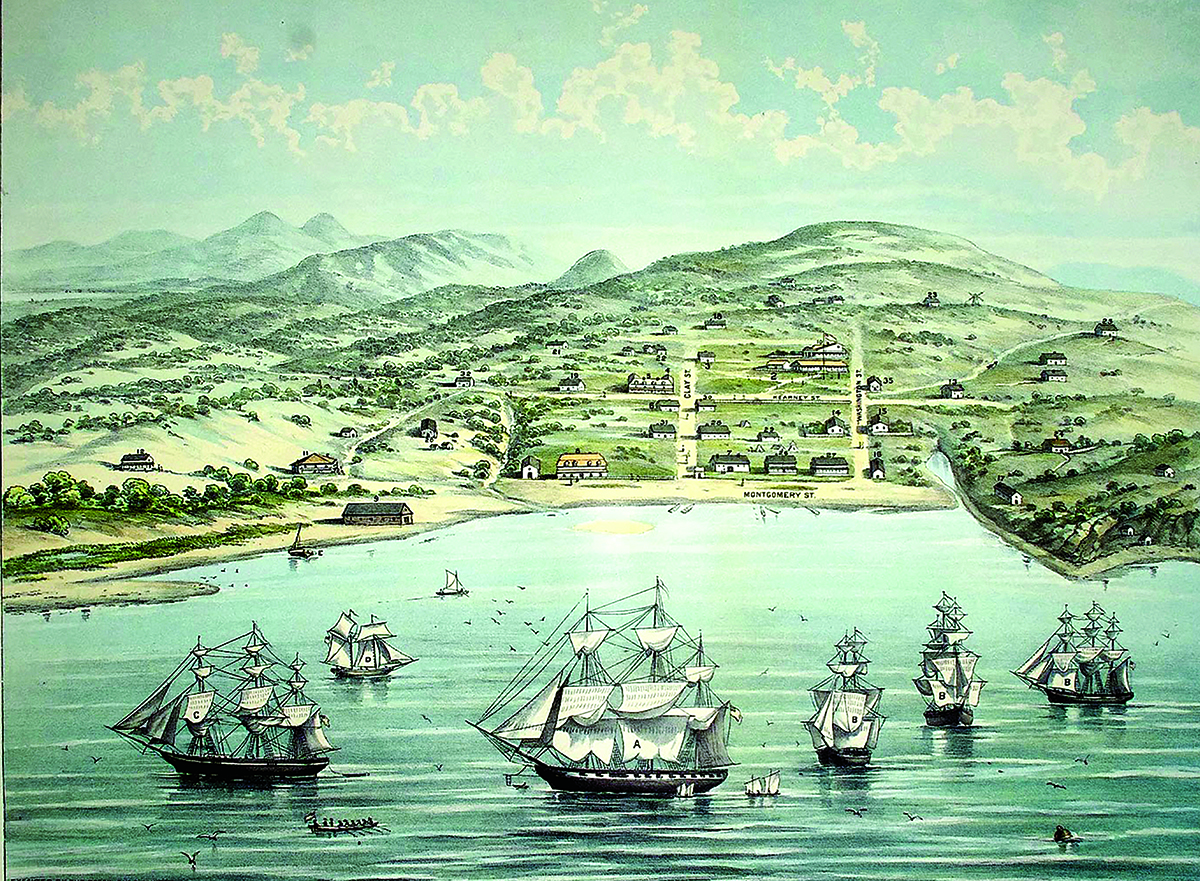Prior to the war the president had made manifest the United States intended to acquire California. Furthermore, many Californians supported annexation. If hostilities did arise, however, Larkin understood he would need to have established formal communications with prominent officials, either in government or business, in proximity to the capital at Monterey. Among those he contacted was William Leidesdorff of Yerba Buena (which would be renamed San Francisco on Jan. 30, 1847), a recently declared citizen of Mexico and local businessman who in 1845, with Polk’s authority, was made sub-consul for that port city. Leidesdorff would prove an indispensable liaison in the near term.
The appointment was unique on two fronts. First, the State Department had never granted such a title, though Larkin believed he had the right to do so. Second, Leidesdorff, though light-skinned, was of Danish-African descent. Despite his reputation as both a respected citizen and business owner, disclosure of his ethnicity likely would have derailed his nomination or, once appointed, compelled him to forfeit his position.
Leidesdorff’s unblemished, short-term ascendancy to prominence in pre–Gold Rush California began when he arrived in the port city of Yerba Buena in 1841. A native of the island of St. Croix, in the Danish West Indies (present-day U.S. Virgin Islands), born out of wedlock on Oct. 23, 1810, to a Danish father and mulatto mother, he benefited from prevailing legal custom that demanded mixed-race offspring be afforded property and education through the father. It appears his father, manager of a sugar plantation, adhered to such social conventions, for when the grown son arrived in New Orleans, he proved quite book-learned and highly literate. By 1834 Leidesdorff had filed naturalization papers in Louisiana and found work in New Orleans as captain of a commercial vessel. His route took him from New Orleans to New York, then back south, with an overland portage through Panama, to Hawaii (then known as the Sandwich Islands) and on to California. On Leidesdorff’s arrival in Yerba Buena on the schooner Julia Ann in 1841, his employer sold the ship. Fishing about for an occupation, Leidesdorff became a merchant in the settlement.

He was quick to prosper. Proceeds of tallow and hide sales generated by Leidesdorff’s mercantile business enabled him to purchase land for speculation and development. On being granted Mexican citizenship in 1844, he received a 35,000-acre grant on the American River near Sutter’s Fort he named Rancho Río de los Americanos after the river.
Leidesdorff and German-born neighbor Captain Johann August “John” Sutter became commercial associates. So significant was the volume of their business that in partial payment of a $2,198 debt owed to Leidesdorff in 1846 Sutter offered “selected Indians…which will be of some service to you.” Indian slavery was customary at the time in parts of Mexican California, though it is unclear whether Leidesdorff accepted the bondspersons in lieu of payment.
By the mid-1840s Leidesdorff’s property holdings in Yerba Buena had grown to 360 lots. Among his more noteworthy real estate developments was the settlement’s first luxury lodging, the City Hotel, built in 1846 at the corner of Clay and Kearny streets. The hotel hosted prominent clientele as well as the city’s first recorded celebration of Thanksgiving, in 1847, in what was at the time unofficially U.S. territory.
That same year Leidesdorff purchased from the Russian American Co. a vessel with which he hoped to provide the first steamship transportation between Yerba Buena and the Sacramento River Valley. No one had yet utilized steamships for commercial purposes in California, let alone sailed one on San Francisco Bay. Unfortunately, a test run showed that Leidesdorff’s boat, the 37-foot-11-inch Sitka (reportedly named after the Russian settlement in Alaska, one of his ports of call when he captained the Julia Ann), was too slow for round-the-clock shipping. The would-be entrepreneur scrapped the idea.
During the Mexican War Leidesdorff played a pivotal role in foreign policy. In June 1846, as fighting broke out between Mexico and the United States, he provided key intelligence to the United States about the Bear Flag insurgents in Sonoma. Through Leidesdorff, Larkin was informed of Major John C. Frémont’s return to California and the success of the Bear Flaggers in capturing Sonoma. Believing Mexico City intended to drive Americans out of all Mexico, the rebels captured Governor Mariano Vallejo and proclaimed the short-lived California Republic. “[The rebels],” Leidesdorff reported, “have 300 stand of arms, including rifles, muskets, carbines and pistols in their garrison of Sonoma…[and] will use them with terrible effect.” In a confidential June 17 letter he also cautioned Larkin that some in the revolt might be considered enemies of the United States and should be replaced.
Leidesdorff seemed impressed with the gains made by the insurgents and noted the detail and significance of the ensign they carried. “Their banner,” he wrote Larkin, “is a white field with a red border, a large star and a grisly [sic] bear.” The components he dubbed the “Flag of Young California” were later incorporated into the state flag. In his memoirs Larkin reflected how important Leidesdorff’s correspondences were toward keeping him apprised of events in northern Mexico at the outset of the war.
In the same 1849 journal entry mentioning Larkin, President Polk remarked how the discovery of gold had fostered a “state of anarchy and confusion” in California, and that in the absence of government there was “no security for life, liberty or property.” Sadly, Leidesdorff, whose ranch bordered Sutter’s Mill, would not live to reap the financial awards stemming from this “anarchy,” for he died of typhoid fever on May 18, 1848. In 1998, on the sesquicentennial of his death, San Francisco officials memorialized him with a plaque recognizing his service as a city councilman and treasurer and for having co-founded the city’s first public school. A stretch of U.S. 50 bordering the site of his former 35,000-acre ranch is named the William Alexander Leidesdorff Jr. Memorial Highway.






